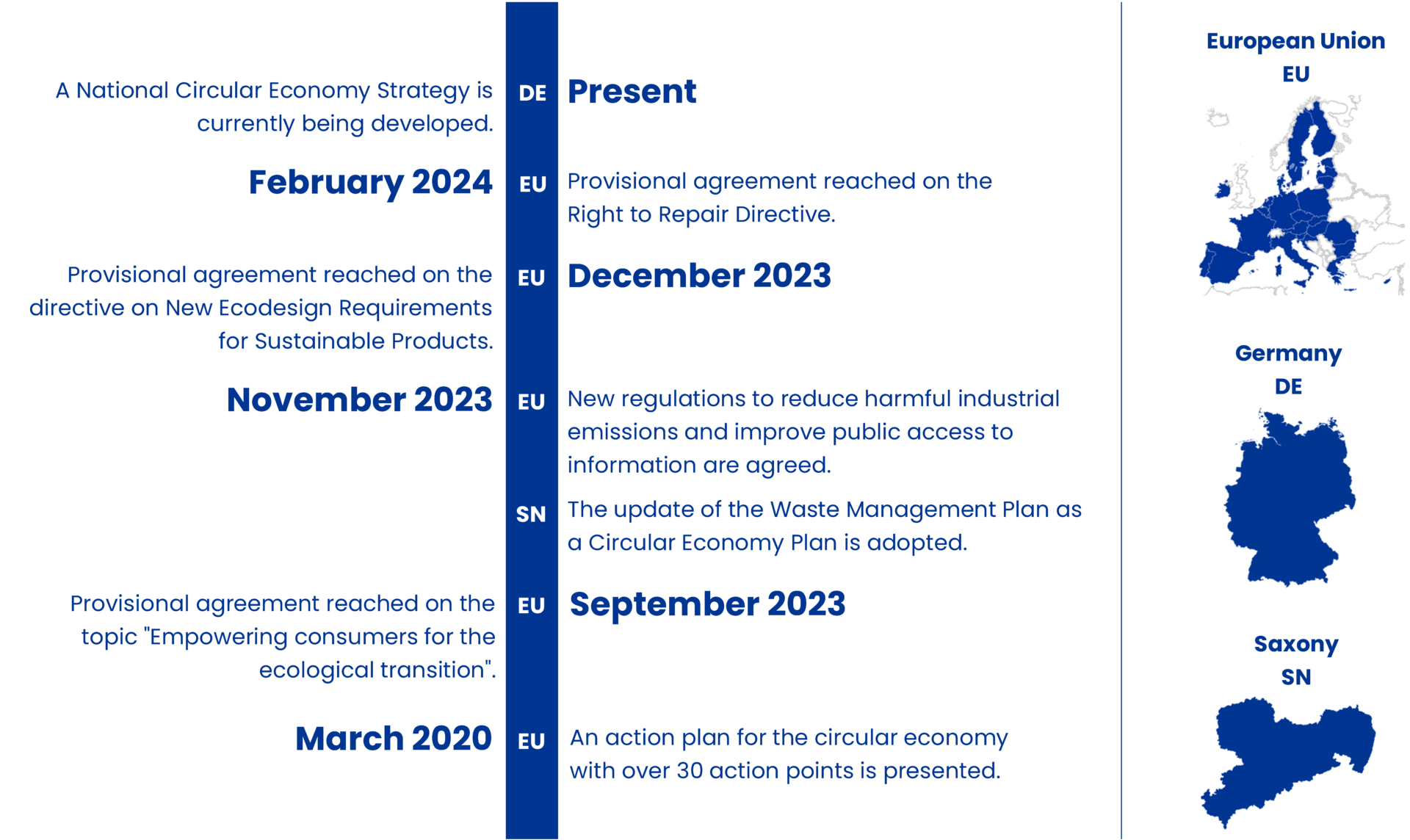
Politics meets circular economy – impulses for a sustainable recycling

More and more governments are recognizing the need to promote circular practices in the economy and encourage society to use resources more consciously to achieve sustainability. Global trends confirm that policies are increasingly focused on minimizing waste. This includes creating incentives for companies to rethink their production processes and make them more resource efficient.
Recycling is a key component of an efficient circular and resource economy. Increasing recycling rates, fostering innovation along the process chain, and creating the right policy framework are key approaches for policymakers and administrators to pave the way.

European Union: Model of a “Circular Economy” in the transformation towards sustainability
The European Union (EU) has become a leader in the circular and resource economy. It has set ambitious targets and guidelines to promote the transition to a more sustainable economy. In 2020, the EU Commission presented a circular economy action plan with concrete measures to use resources more efficiently, reduce waste and promote recycling. As part of the ongoing development, the introduction of a mandatory recycling quota is being considered. This quota would oblige manufacturers to use a certain proportion of recycled materials in the manufacture of new products. The resource- and energy-intensive construction industry plays a special role here [1].
Federal Republic of Germany: Circular economy as a cross-cutting issue
At the national level, the Federal Republic of Germany is implementing EU requirements and developing its own strategies to promote the circular and resource economy. Legal regulations [2, 3, 4, 5, 6, 7] and support programs [8] motivate the economy and society to actively participate in sustainable practices. Special emphasis is placed on innovative technologies and the expansion of recycling infrastructures. For example, German authorities and institutions are required to give explicit preference in their procurement to resource-saving, low-waste, repair-friendly, low-emission and recyclable products, provided that this does not entail unreasonable additional costs.
Free State of Saxony: The shift towards circularity and reuse
The state-specific measures in Saxony [9, 10, 11, 12, 13, 14, 15, 16] make an important contribution to the design of a circular economy and resource management policy that is tailored to the specific needs of the region. Special attention is paid to the uniqueness and diversity of the economic and cultural landscape of Saxony. With the targeted implementation of funding guidelines – such as the Energy and Climate Funding Guideline (FRL EuK/2023) [17] – Saxony aims not only to establish sustainable practices, but also to support local companies in switching to circular processes.
Close cooperation with the local economy plays a key role. Through partnerships and targeted measures, incentives are created to support companies in integrating new approaches. This is not only about recycling waste, but also about creating new business models and promoting innovative technologies within the regional economic structure.
As of 2024-03-04
List of references
[1] Europäische Kommission. Aktionsplan für die Kreislaufwirtschaft. (2020). URL: https://www.consilium.europa.eu/de/policies/circular-economy/
[2] Kreislaufwirtschaftsgesetz vom 24. Februar 2012 (BGBl. I S. 212), das zuletzt durch Artikel 5 des Gesetzes vom 2. März 2023 (BGBl. 2023 I Nr. 56) geändert worden ist
[3] Abfallverzeichnis-Verordnung vom 10. Dezember 2001 (BGBl. I S. 3379), die zuletzt durch Artikel 1 der Verordnung vom 30. Juni 2020 (BGBl. I S. 1533) geändert worden ist
[4] Anzeige- und Erlaubnisverordnung vom 5. Dezember 2013 (BGBl. I S. 4043), die zuletzt durch Artikel 2 der Verordnung vom 28. April 2022 (BGBl. I S. 700) geändert worden ist
[5] Nachweisverordnung vom 20. Oktober 2006 (BGBl. I S. 2298), die zuletzt durch Artikel 5 der Verordnung vom 28. April 2022 (BGBl. I S. 700) geändert worden ist
[6] Abfallbeauftragtenverordnung vom 2. Dezember 2016 (BGBl. I S. 2789), die zuletzt durch Artikel 4 der Verordnung vom 28. April 2022 (BGBl. I S. 700) geändert worden ist
[7] Entsorgungsfachbetriebeverordnung vom 2. Dezember 2016 (BGBl. I S. 2770), die zuletzt durch Artikel 2 des Gesetzes vom 8. Dezember 2022 (BGBl. I S. 2240) geändert worden ist
[8] Bundesministerium für Umwelt, Naturschutz, nukleare Sicherheit und Verbraucherschutz. Förderprogramme. URL: https://www.ressource-deutschland.de/themen/kreislaufwirtschaft/innovative-recyclingtechnologien/foerderprogramme/
[9] Sächsisches Kreislaufwirtschafts- und Bodenschutzgesetz vom 22. Februar 2019 (SächsGVBl. S. 187)
[10] Gesetz zum Staatsvertrag über die Bildung einer gemeinsamen Einrichtung zur Abfallrückholung nach § 6 Abs. 1 Satz 7 des Abfallverbringungsgesetzes vom 24. August 2000 (SächsGVBl. S. 361)
[11] Sächsisches Kommunalabgabengesetz in der Fassung der Bekanntmachung vom 9. März 2018 (SächsGVBl. S. 116), das zuletzt durch Artikel 2 des Gesetzes vom 13. Dezember 2023 (SächsGVBl. S. 876) geändert worden ist
[12] Verordnung des Sächsischen Staatsministeriums für Umwelt und Landwirtschaft über Zuständigkeiten bei der Durchführung von Vorschriften des Kreislaufwirtschafts- und Bodenschutzrechts vom 25. Juni 2019 (SächsGVBl. S. 573)
[13] Sächsische Chemikalienrecht-Zuständigkeitsverordnung vom 15. April 2011 (SächsGVBl. S. 162), die durch Artikel 24 der Verordnung vom 11. Dezember 2012 (SächsGVBl. S. 753) geändert worden ist
[14] Sächsische Abwasserverordnung für Abfallverbrennungsanlagen vom 11. August 2003 (SächsGVBl. S. 310), die durch Artikel 11 des Gesetzes vom 12. Juli 2013 (SächsGVBl. S. 503) geändert worden ist
[15] Pflanzenabfallverordnung vom 25. September 1994 (SächsGVBl. S. 1577)
[16] Verwaltungsvorschrift des Sächsischen Staatsministeriums für Energie, Klimaschutz, Umwelt und Landwirtschaft über die geltenden Verwaltungsvorschriften des Staatsministeriums für Energie, Klimaschutz, Umwelt und Landwirtschaft vom 4. Dezember 2023 (SächsABl. SDr. S. S 315)
[17] Förderrichtlinie Energie und Klima vom 4. Juli 2023 (SächsABl. S. 999), enthalten in der Verwaltungsvorschrift vom 4. Dezember 2023 (SächsABl. SDr. S. S 315)
About the partnership
Be part of the alliance and join us in facing the challenges with regard to the no longer avoidable handling of fiber composites. Let us together lead the region “Elbe Valley Saxony” into an economically resilient future.
